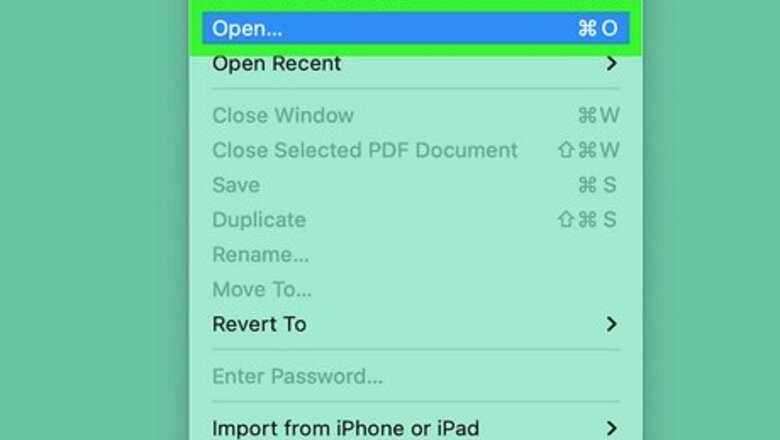
views
- You can easily convert HEIC files to JPG in Preview or Photos, which are both built-in photo viewing and editing tools on Mac.
- Mac’s built-in Automator app makes it easy to batch-convert photos directly from the Finder.
- If you have an older Mac (running Sierra or earlier), you will need to use third-party apps or websites.
In Preview
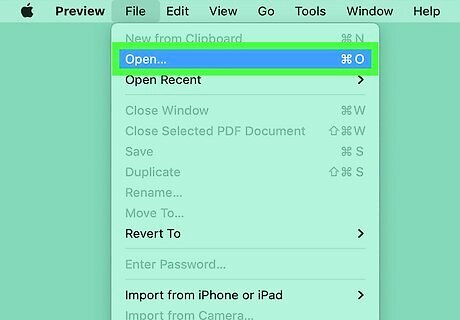
Open the image(s) you want to convert in Preview. Preview is a built-in app on Mac. By default, your HEIC files should automatically open in Preview if you double-click them. You can also open your images by launching Preview, then clicking File in the menu bar at the top of the screen and selecting Open…. Browse for the HEIC file(s) you want to convert, select them, and click Open.
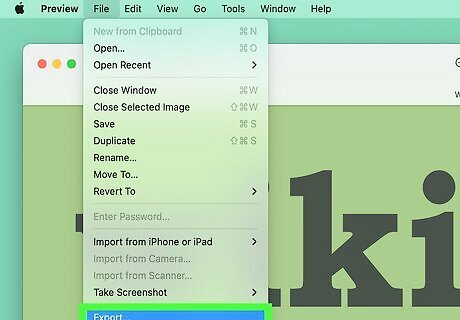
Open the File menu and select Export. You’ll see this option close to the bottom of the File menu. If you want to convert multiple images at once, open all the images you want to convert in Preview and select them in the sidebar on the left side of the main Preview window, then select Export.
Select JPEG from the Format dropdown. This option should be selected by default. You can also select JPEG-2000 if you want a higher-quality image, but be aware that fewer applications support this type of JPG file. At this point you can also: Rename your image Add tags Choose a different save location Adjust the quality of the exported image (using the slider from Least to Best).
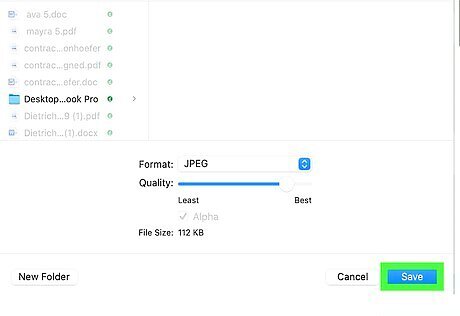
Click Save. Your image will be saved as a JPG file in your chosen location. EXPERT TIP Brandon Phipps Brandon Phipps Technology Specialist Brandon Phipps is a Technology Specialist based in Bakersfield, CA. He is the owner of Second Star Technologies and specializes in Managed IT Services for small and mid-sized businesses in Bakersfield, CA. With over 23 years of experience, he offers expert cloud computing, cybersecurity, and network management solutions. Brandon is a committed community member and coach who leads and innovates in tech and sports coaching. His dedication to local businesses and communities is evident in his hands-on, tailored approach to IT solutions. Brandon Phipps Brandon Phipps Technology Specialist High Efficiency Image Format (HEIC) is a file format that provides high-quality images while minimizing storage space. However, they're incompatible with many apps and devices, so you often have to convert them to other formats.
In Photos
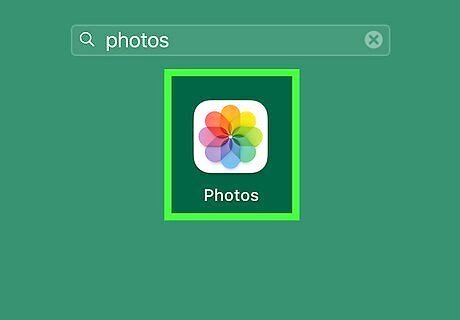
Open the Photos app. Photos is another app that is built into macOS. The icon looks like a rainbow-colored rosette on a white background. If it isn’t already in your Dock at the bottom of the screen, open Launchpad and find it there. Click on it to open it.
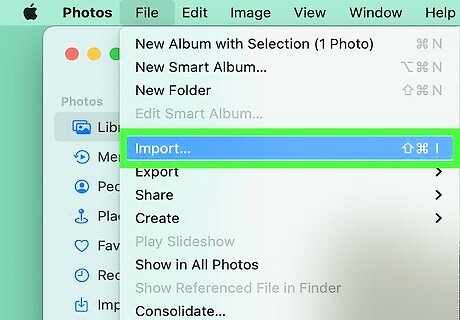
Import your images into Photos. If the images you want to convert aren’t already in Photos, you’ll need to import them. There are a couple ways to do this: Click File at the top of the screen, select Import, then browse for the image(s) you want to import and click Import. Drag the image from its location on your computer into the main Photos window. Either way, it may take a moment for the image(s) to appear.

Select the image(s) you want to convert. If you want to convert several images at once, you can do so by clicking and dragging your mouse over them. Or, select one image, then use the arrow keys while holding down Shift to select the images on either side of it.
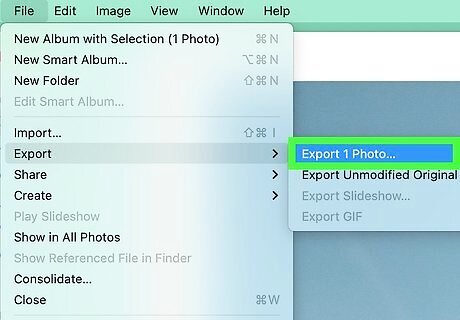
Drag and drop the images to your desktop or Finder. This will automatically convert the images from HEIC to JPG! Alternatively, select the images, then click File > Export. Then: In the popup, select your preferred format (in this case, JPEG) and any other info you want to export (such as the image title, keywords, or location information). Click Export. Browse for the location where you want to save your file and click Export again.
With Automator
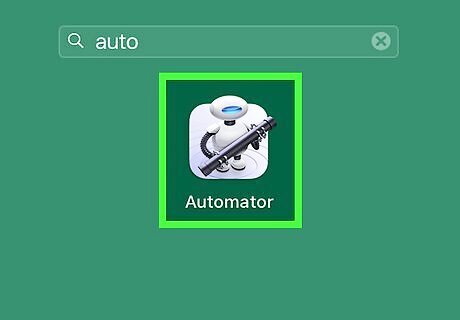
Launch the Automator app. Automator is a utility on macOS that allows you to automate a variety of actions on your computer, similar to Shortcuts on iOS. Automator is a great option if you want to batch-convert a bunch of HEIC files to JPG. To get started, launch Automator from Launchpad or find it in your Applications folder and double-click it.
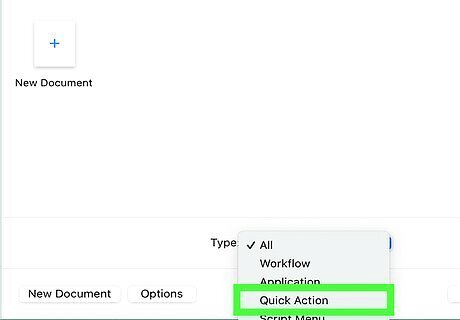
Select Quick Action from the popup. When you first open Automator, you’ll see a popup with the title Choose a type for your document. Select the gear icon that says either Quick Action or Service, depending on your version of macOS. Then, click Choose.
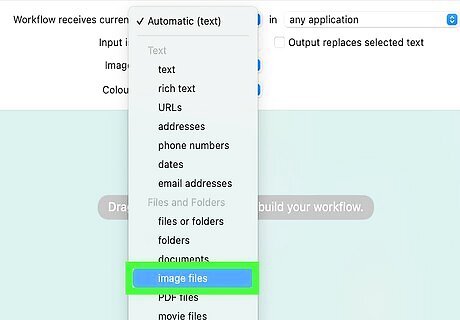
Choose image files from the Workflow receives current dropdown. In some versions of macOS, this menu will be labeled Service receives selected instead. The dropdown is located at the top of the app window to the right of the Actions area.
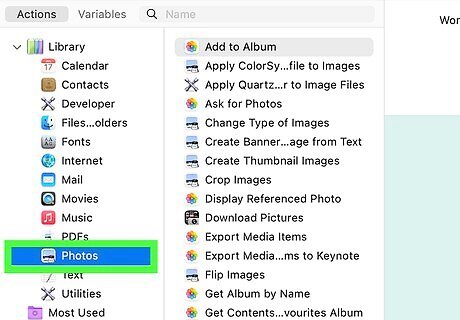
Select Photos in the leftmost menu pane. It’s under the Library header.
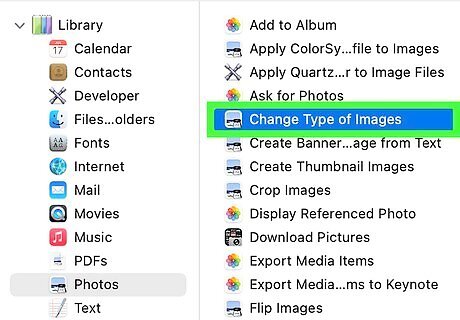
Drag Change Type of Images into the main work area. Locate Change Type of Images in the list of actions on the left side of the app window. Click it and drag it into the gray area that says Drag actions or files here to build your workflow. If you want to make copies of your converted files but also keep the HEIC originals, click Add in the dialog that pops up asking you if you want to “add a Copy Finder Items action.” If you don’t want to keep the originals, click Don’t Add.
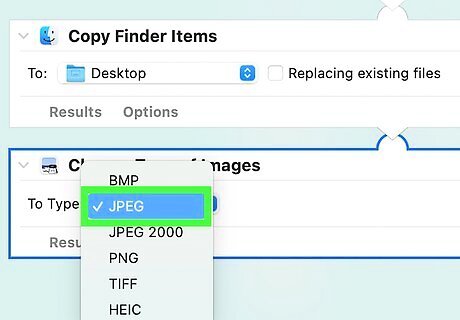
Select JPEG from the action dropdown menu. The Change Type of Images action will now appear in your workflow area. Click on the To Type: dropdown menu and select JPEG. If you also added the Copy Finder Items action, select your preferred location for saving the copies from the To: dropdown.
Select Export from the File menu. Click File in the menu bar at the top of the screen and click Export. This will save your new workflow. From there: Type a name for your workflow, such as “HEIC to JPG Conversion,” in the Export As: field. Select where you want to save the workflow, such as your Desktop or Documents folder. Click Save.
Double-click the saved script and click Install. When you double-click your exported workflow, a window will pop up asking if you want to install it. Click Install, then click Done.
Open the folder where your images are located in Finder. Now you can convert images using your workflow right in Finder! Click the Mac Finder Finder icon in the Dock and navigate to where your images are located.

Select Services from the Finder menu. With the images selected, click Finder at the top of the screen. Click Services in the dropdown menu.
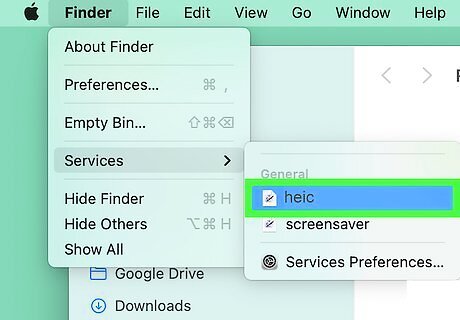
Click your workflow in the Services menu. You should see it under the header Pictures. If you get a popup asking you to allow access to your selected save location, allow it. The converted images will save to your selected location. You should only see this popup the first time you run the workflow.
With Third-Party Apps and Websites
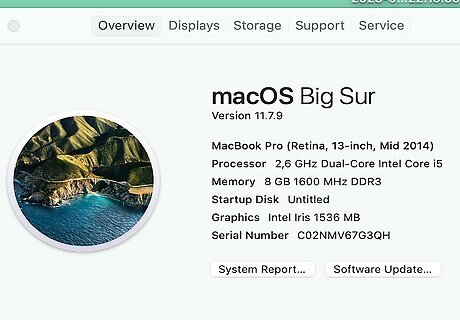
Try these options if you’re running macOS 10.12 (Sierra) or earlier. With so many built-in options for converting from HEIC to JPG on a Mac, you probably won’t need to rely on third-party software. However, if you have an older Mac or you’re running an early version of macOS (anything before High Sierra), you may need to download an app or use an online converter to do it.

Download a converter app from the App Store. Launch the App Store on your Mac and search for heic to jpg converter. Several options will come up. Click Get next to the name of the app (or the button displaying the price, if it’s a paid app) and wait for it to download. Some highly-rated options include HEIC Converter, The Image Converter, and HEIC Converter – AnyHEIC. You may need to grant permission for the app to access your photos.
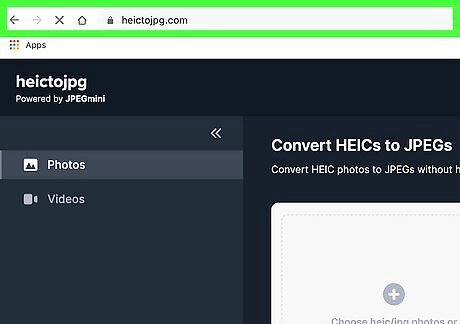
Use an online converter if you don’t want to install an app. There are many websites where you can upload HEIC images, convert them to JPG or another format, and download them again. Try one of the following websites: https://heictojpg.com/ https://cloudconvert.com/heic-to-jpg https://www.freeconvert.com/heic-to-jpg




















Comments
0 comment